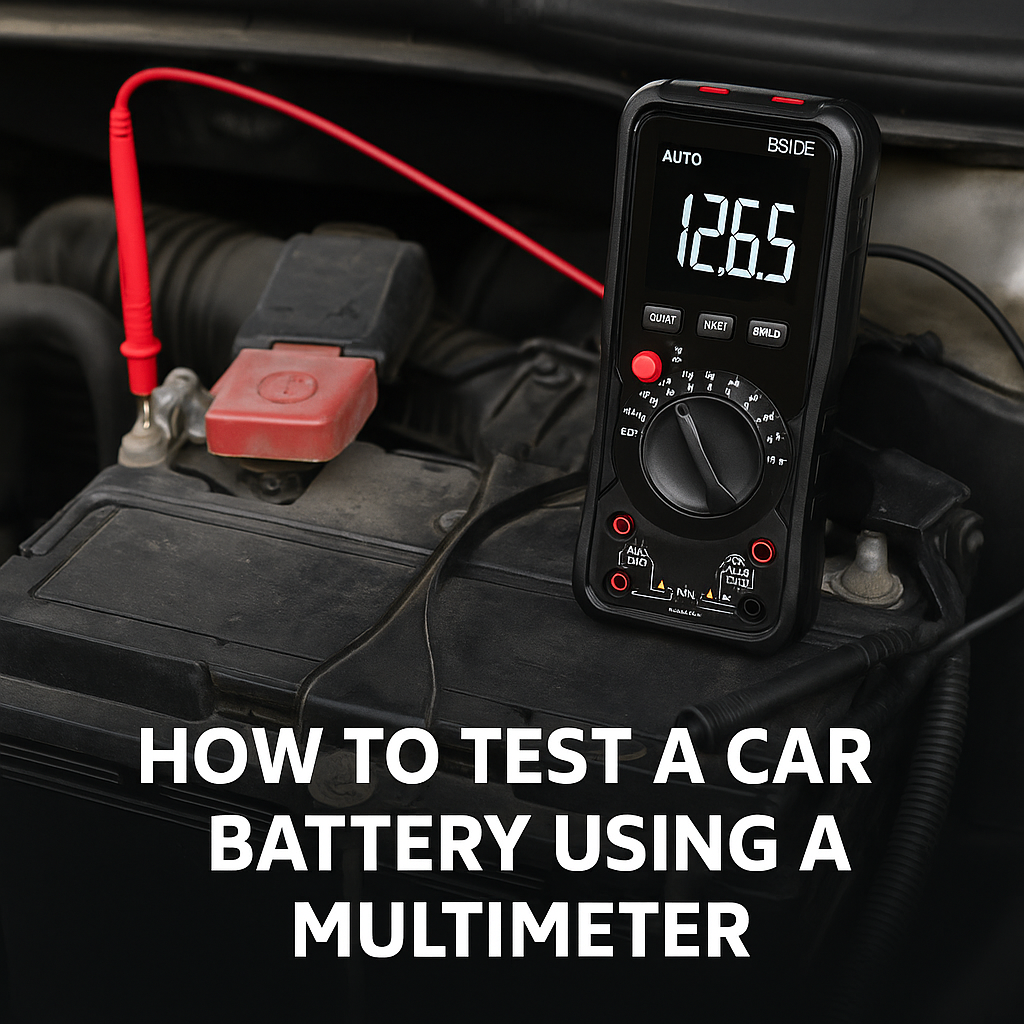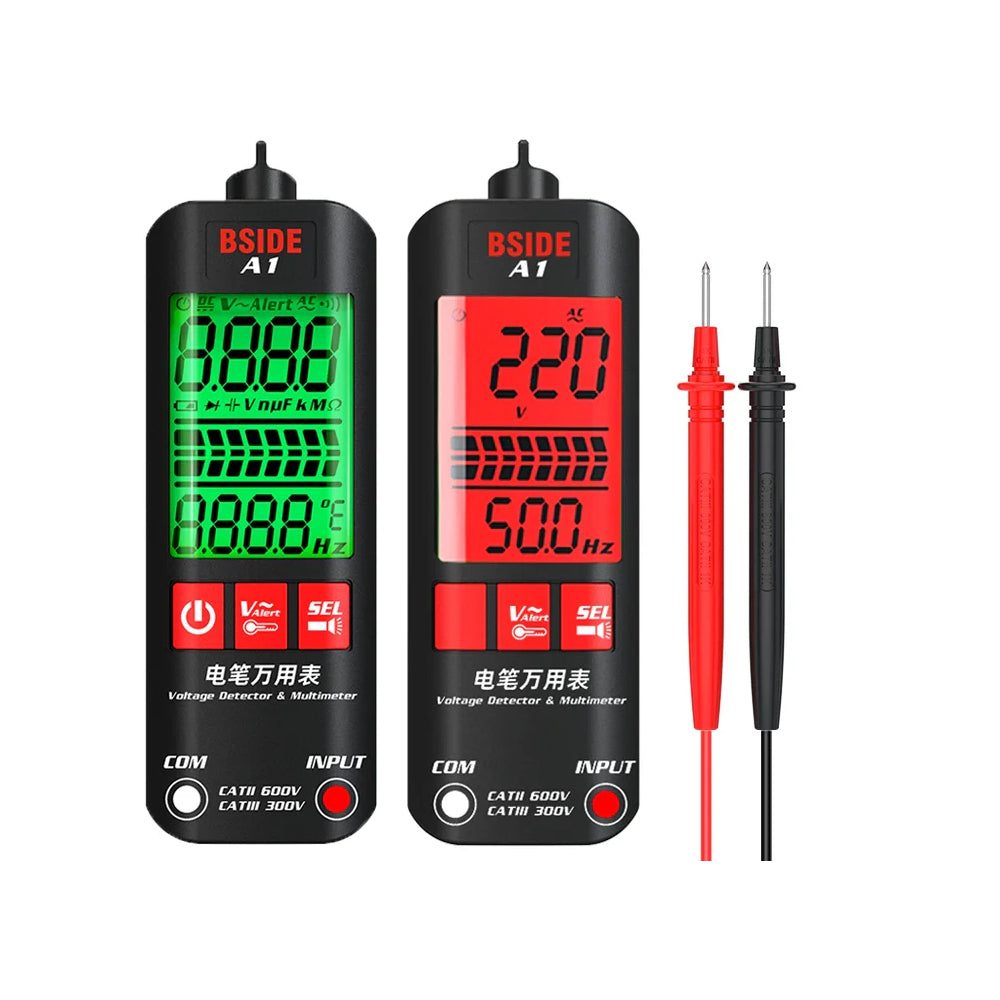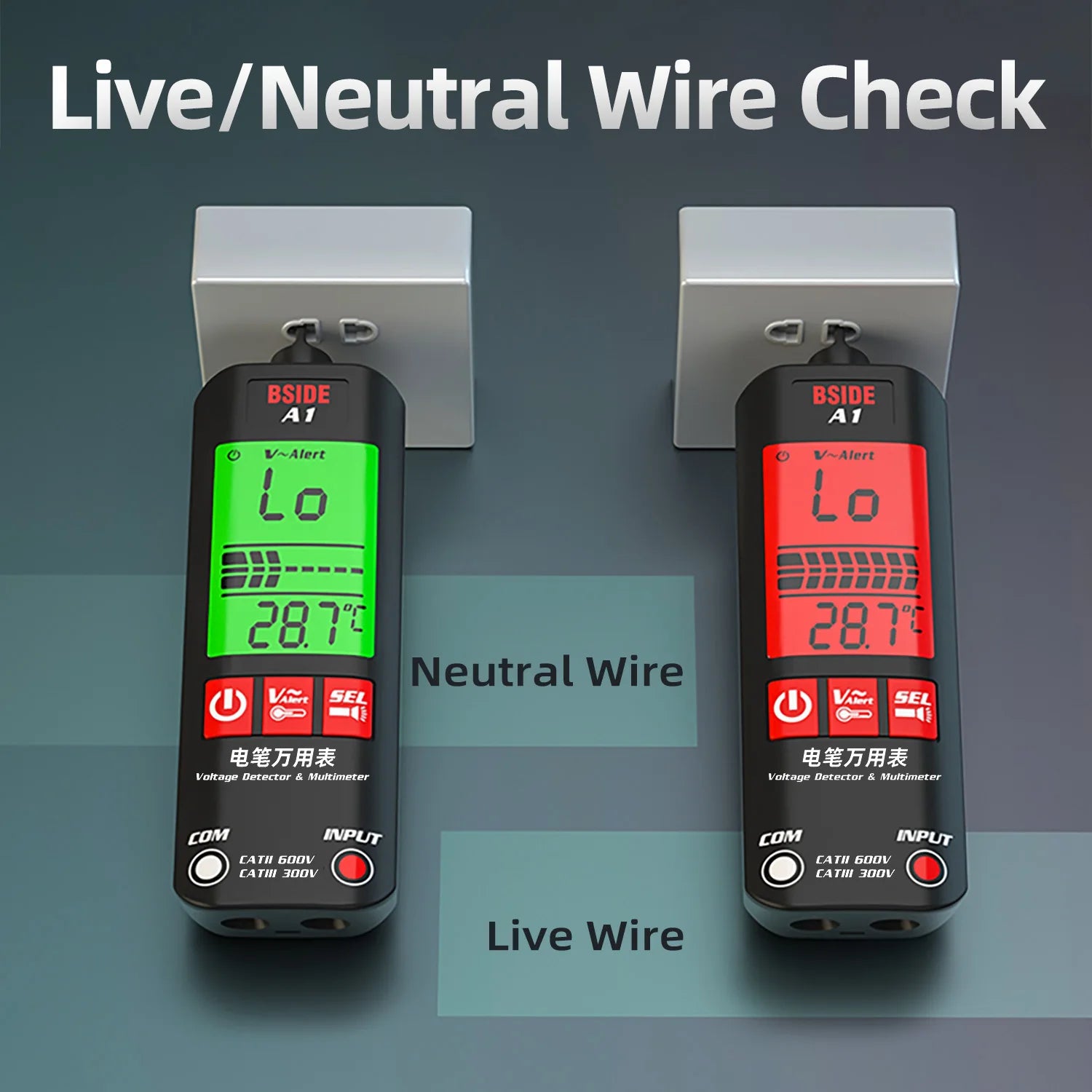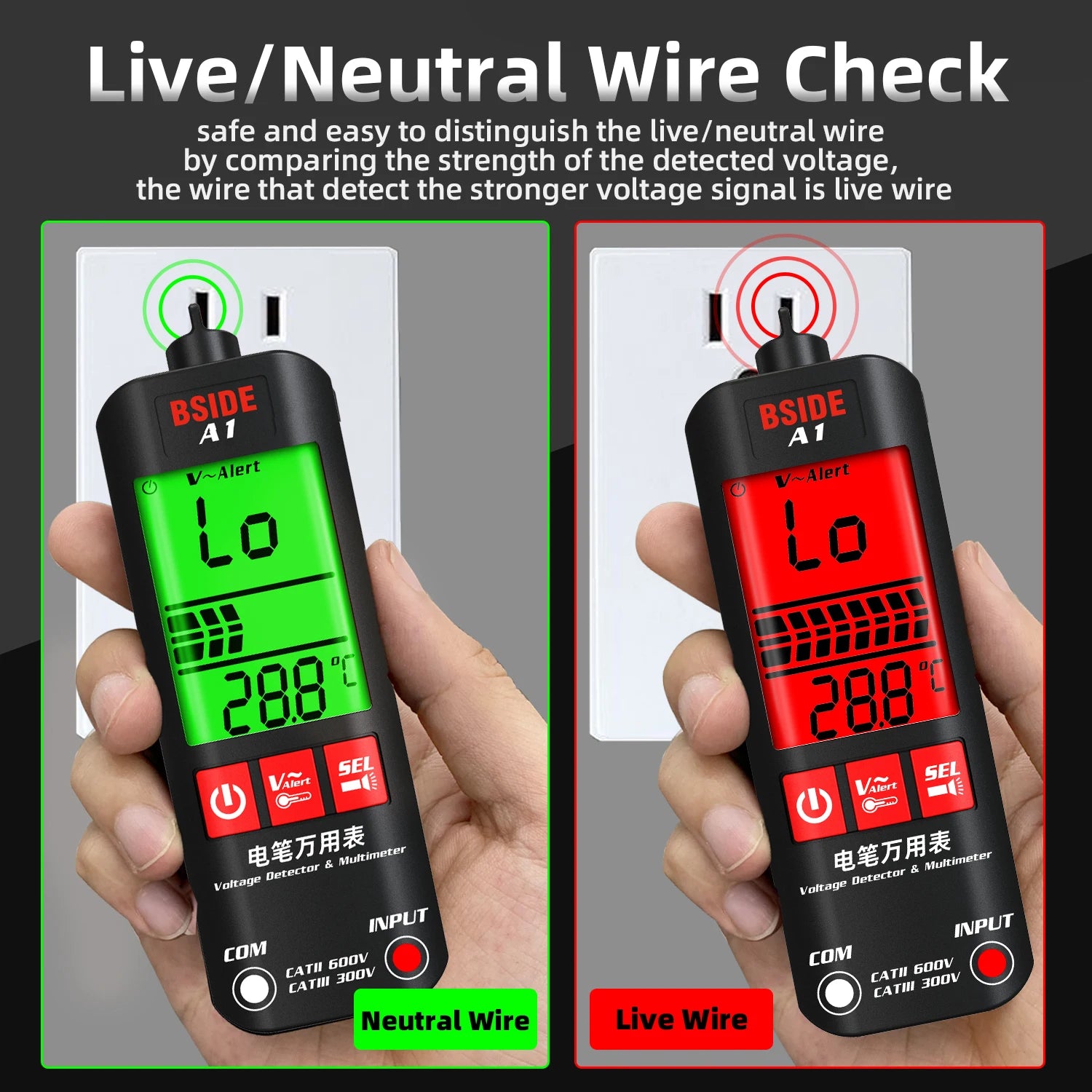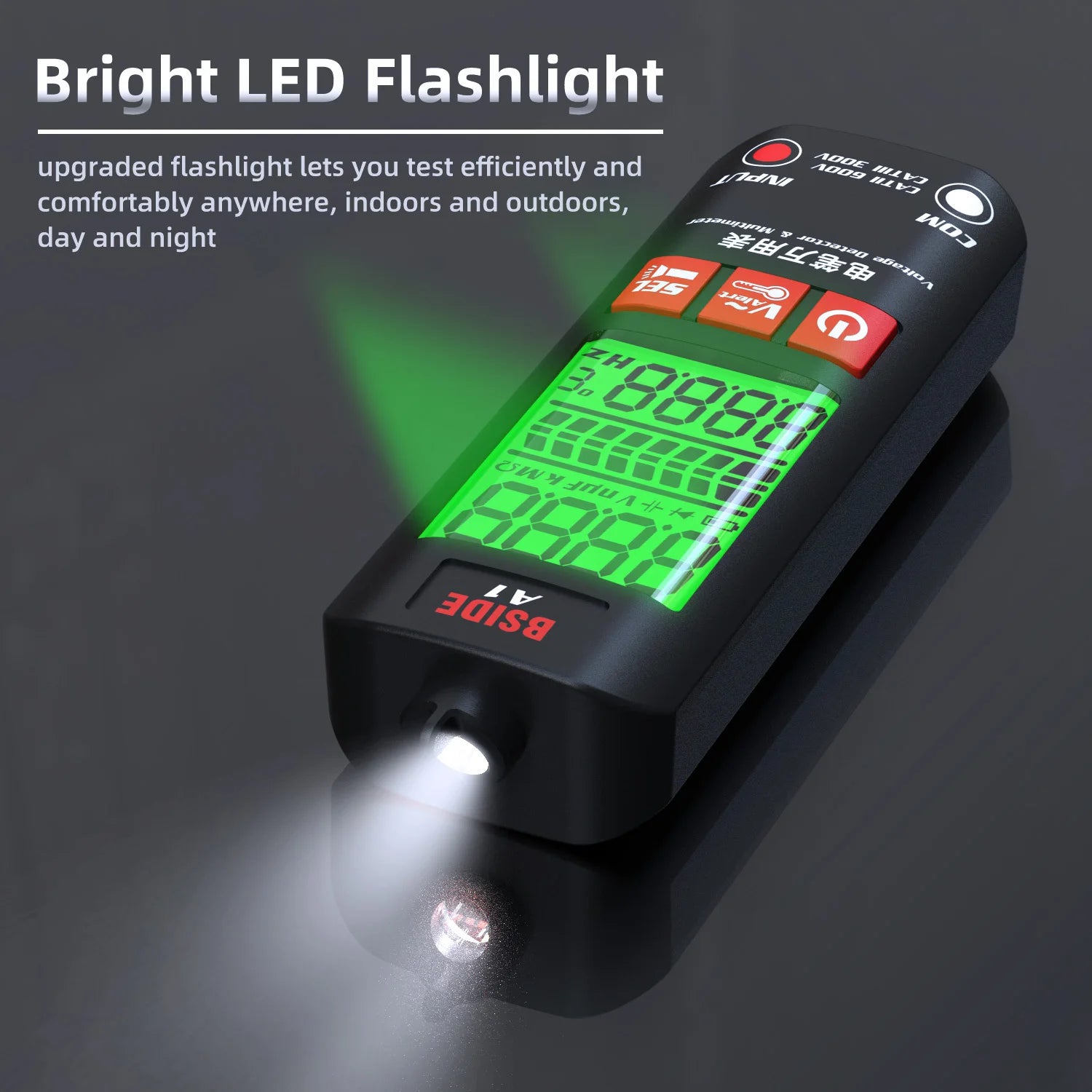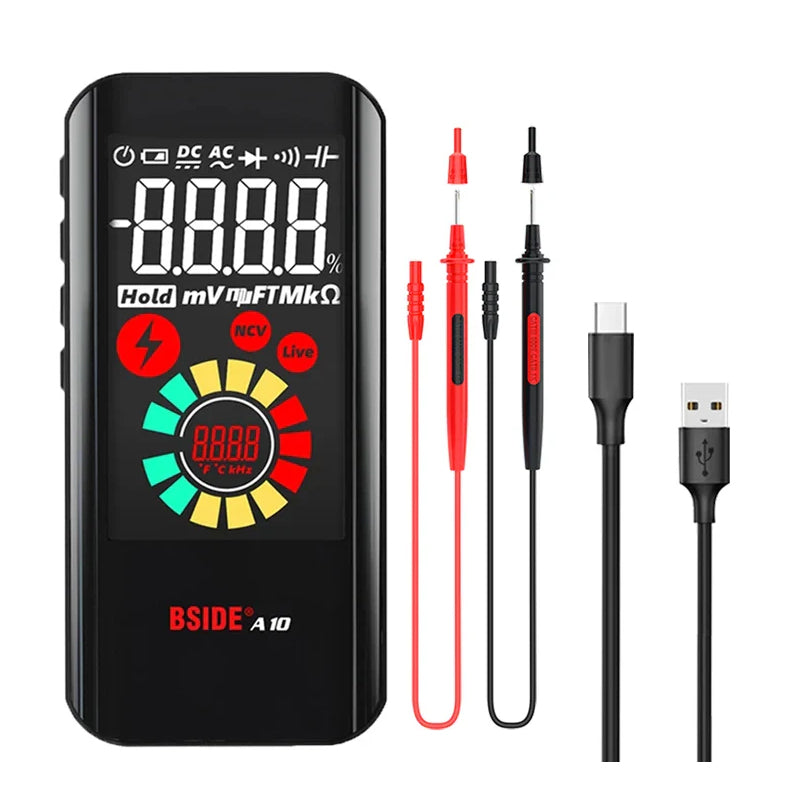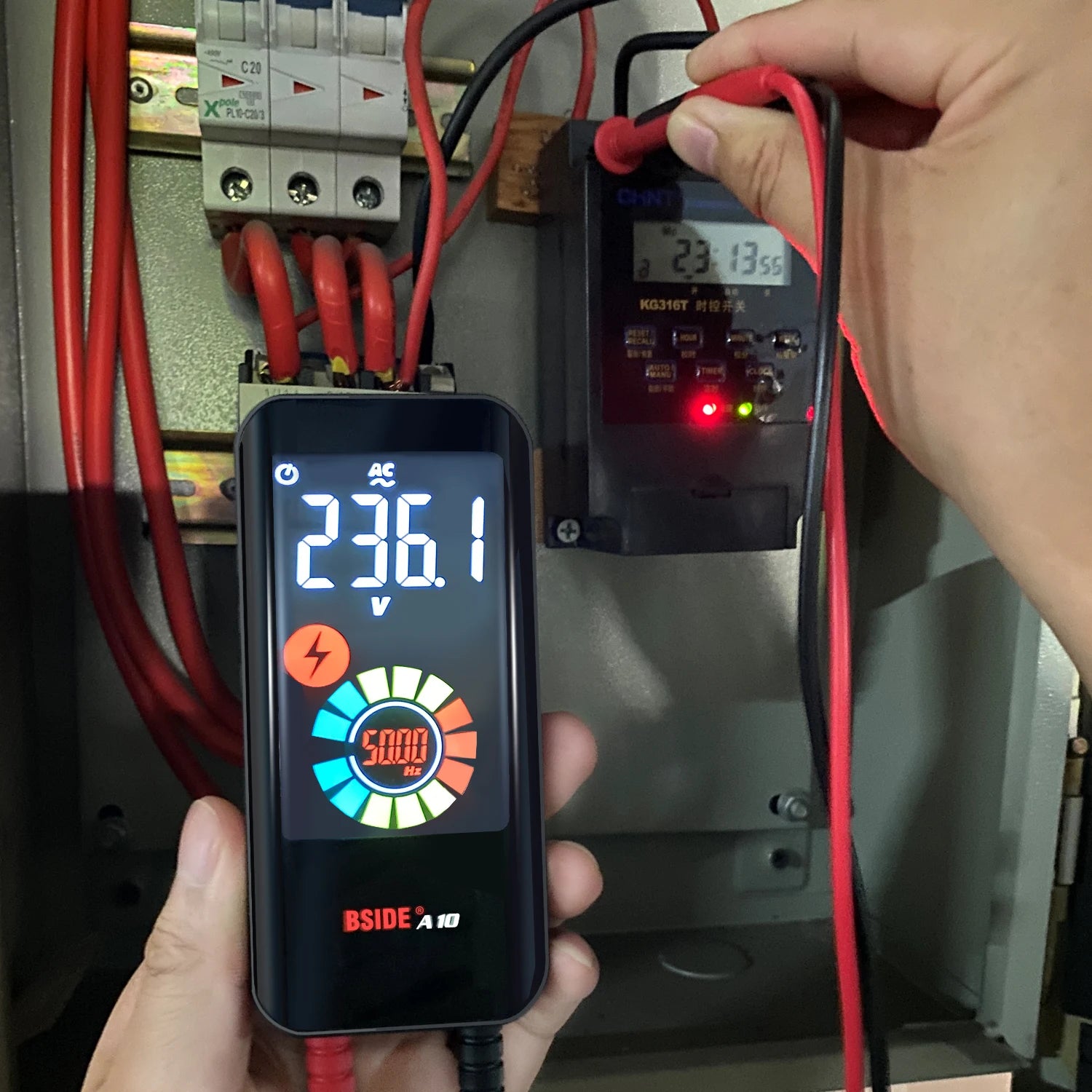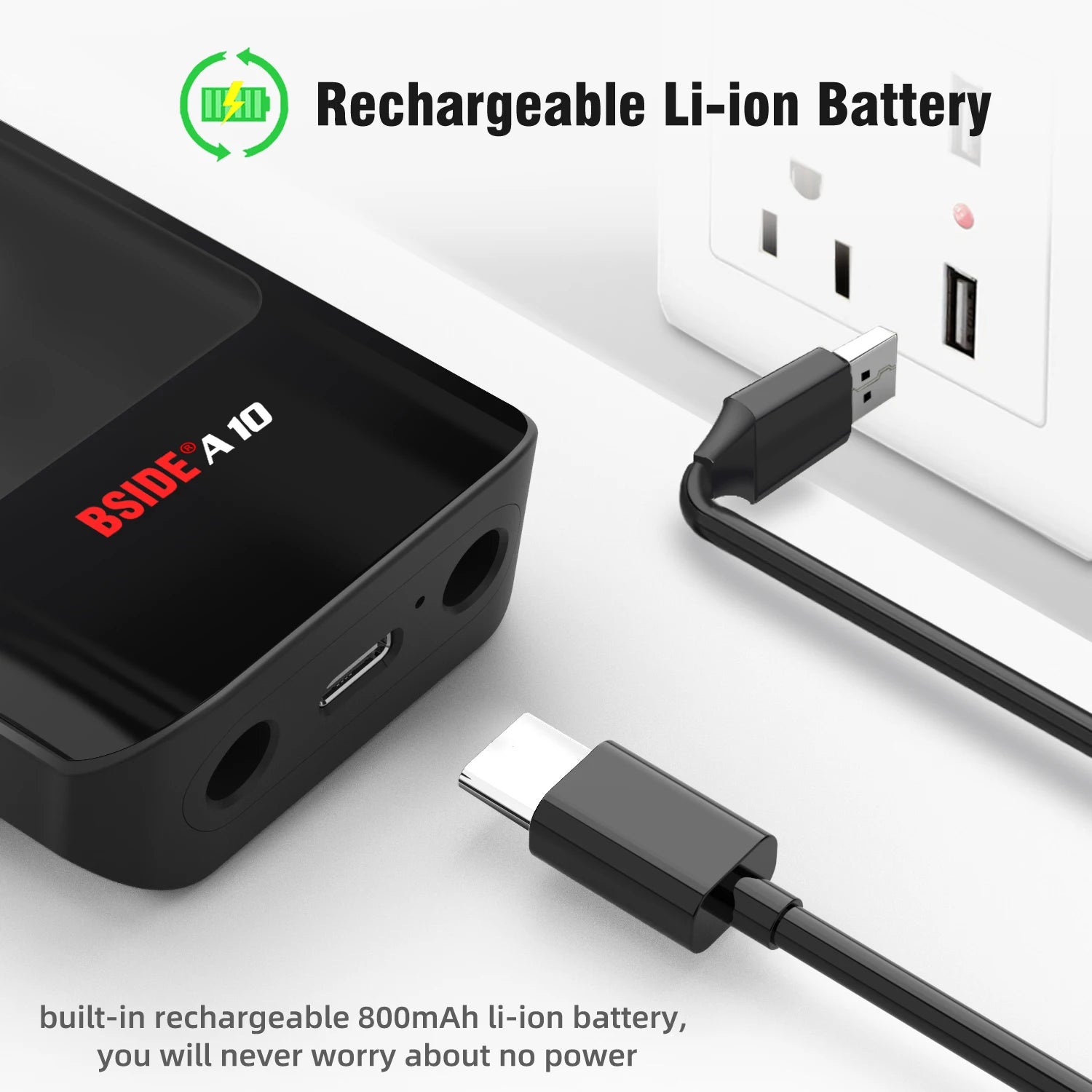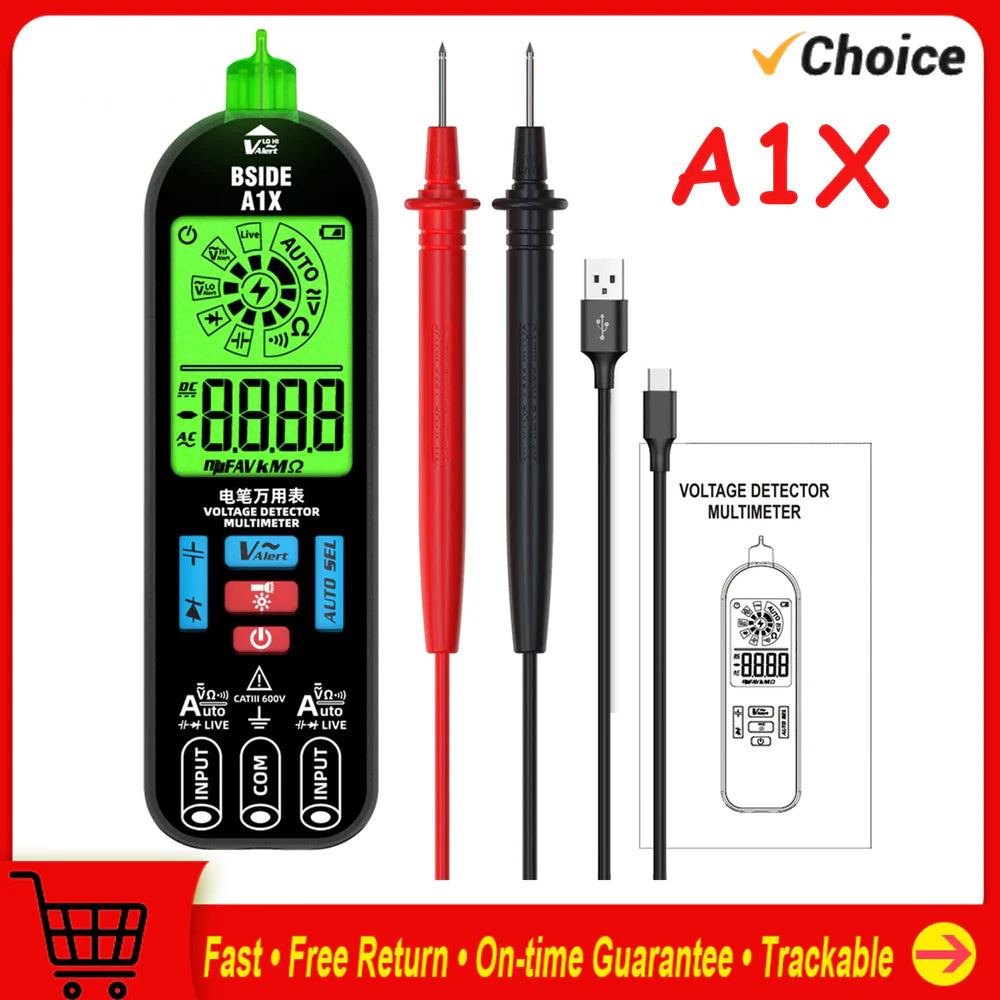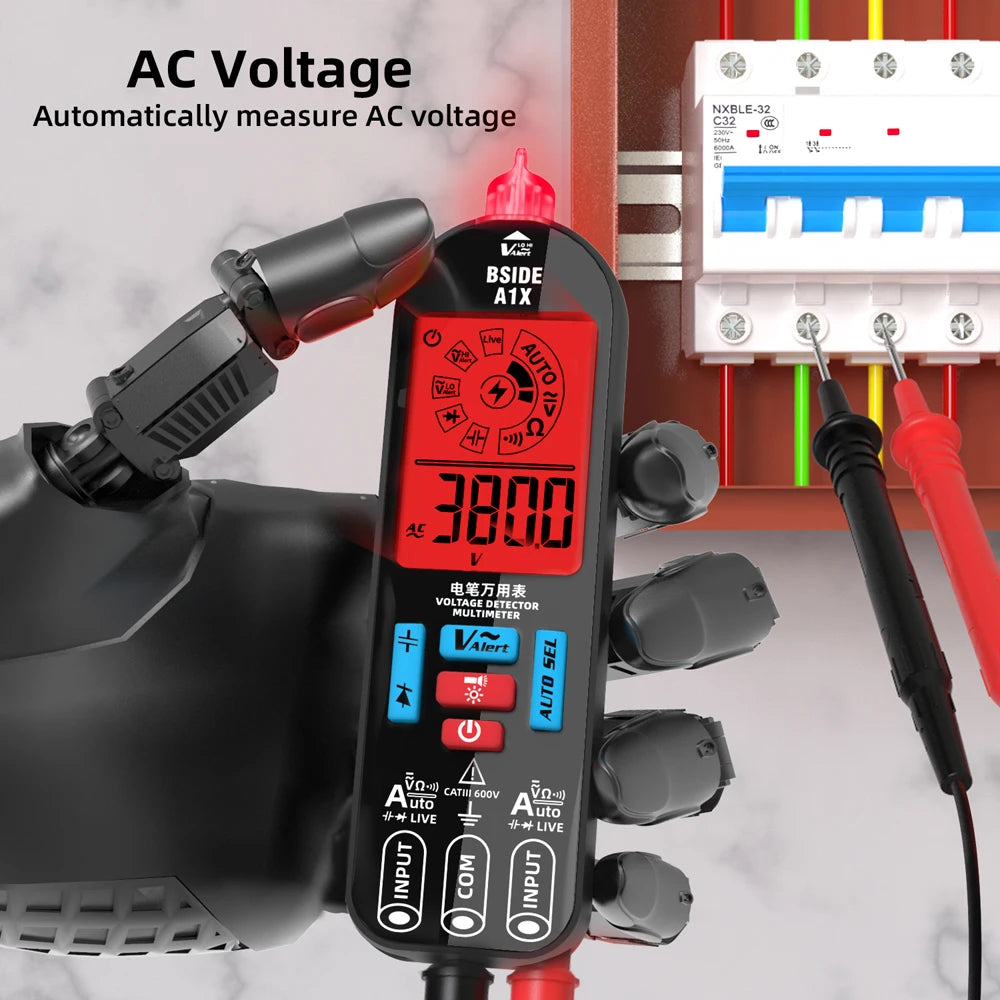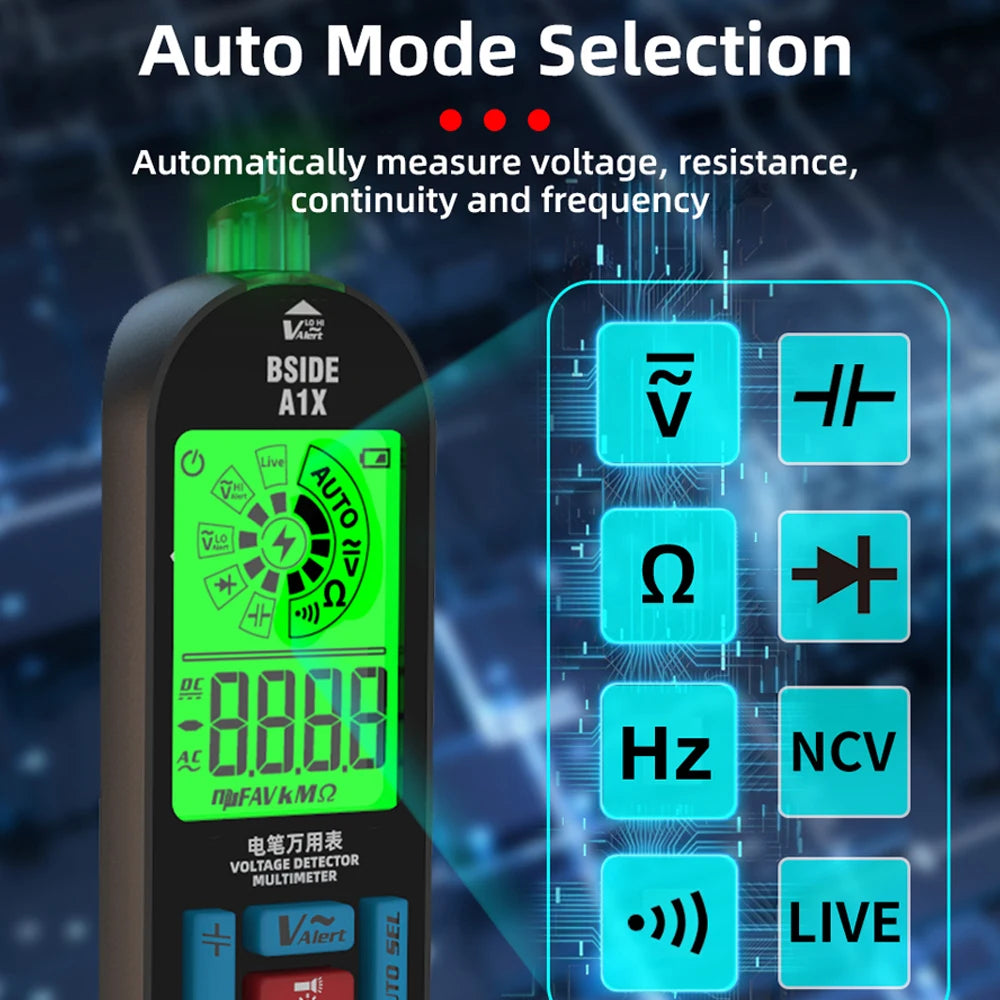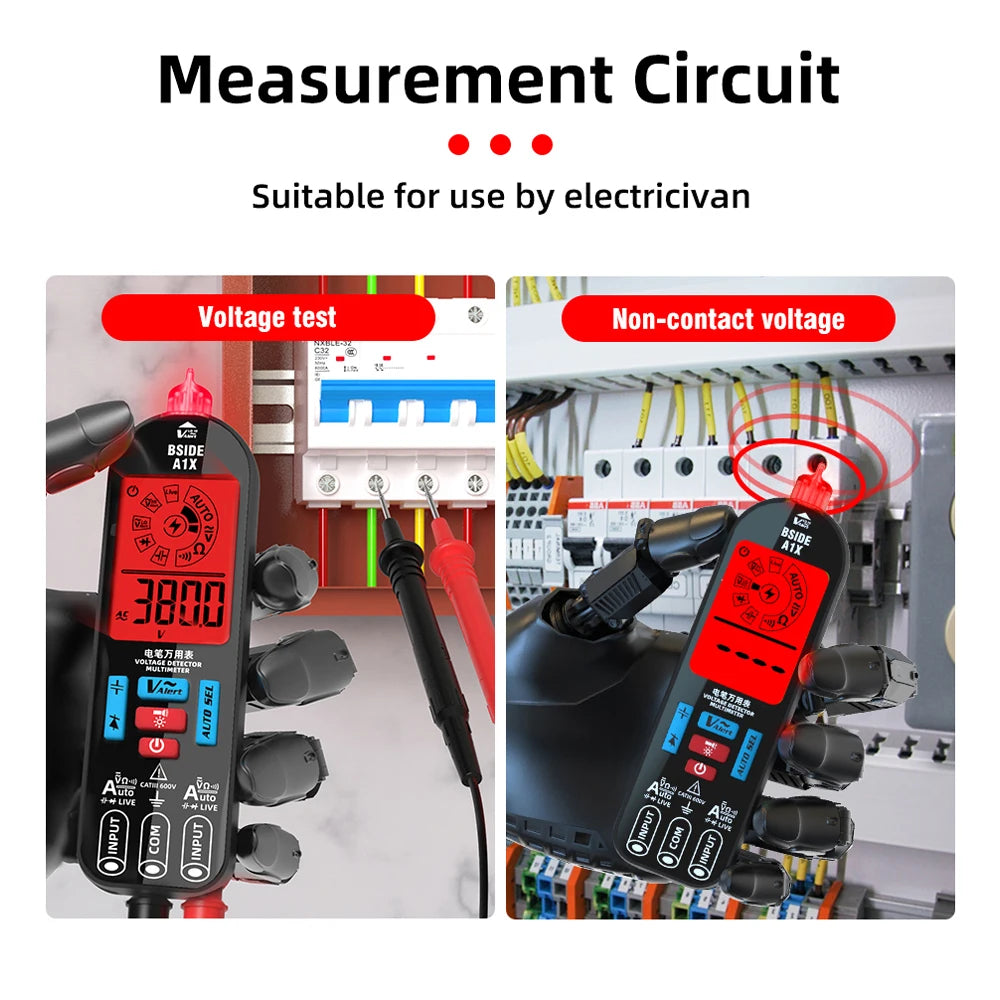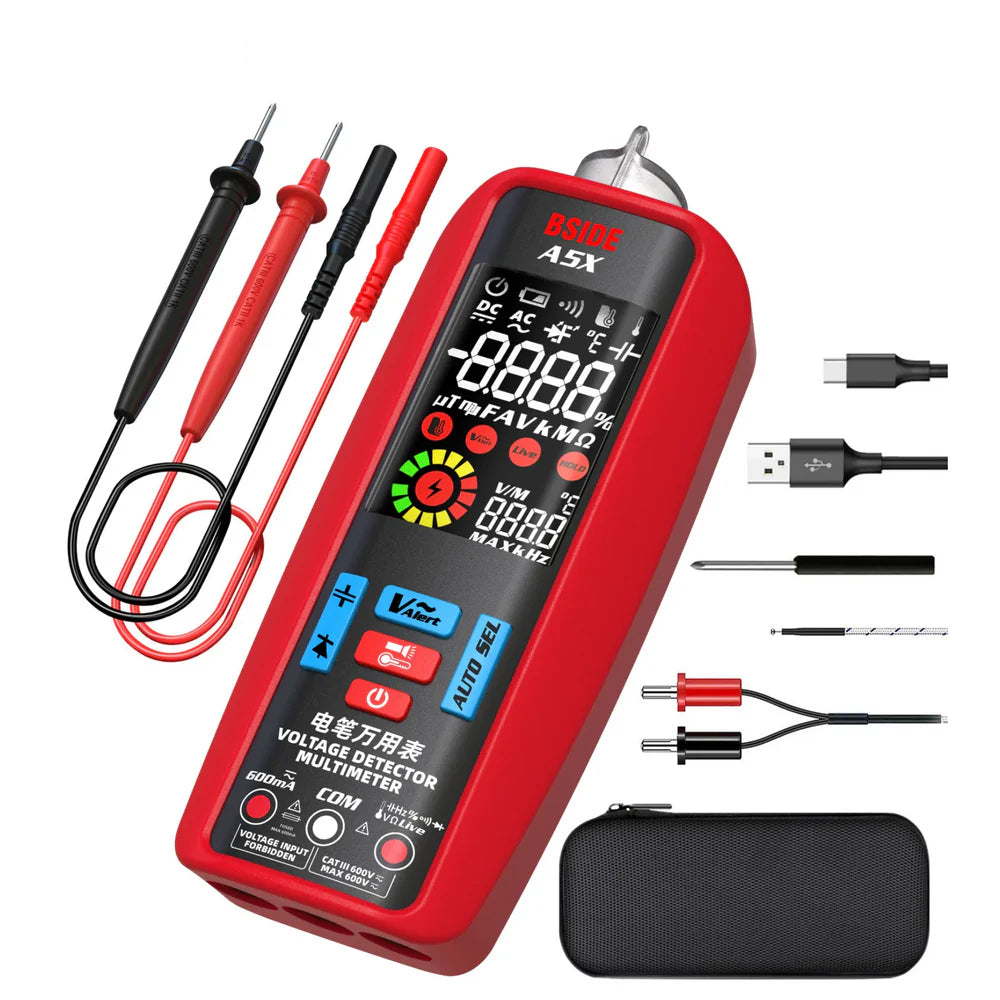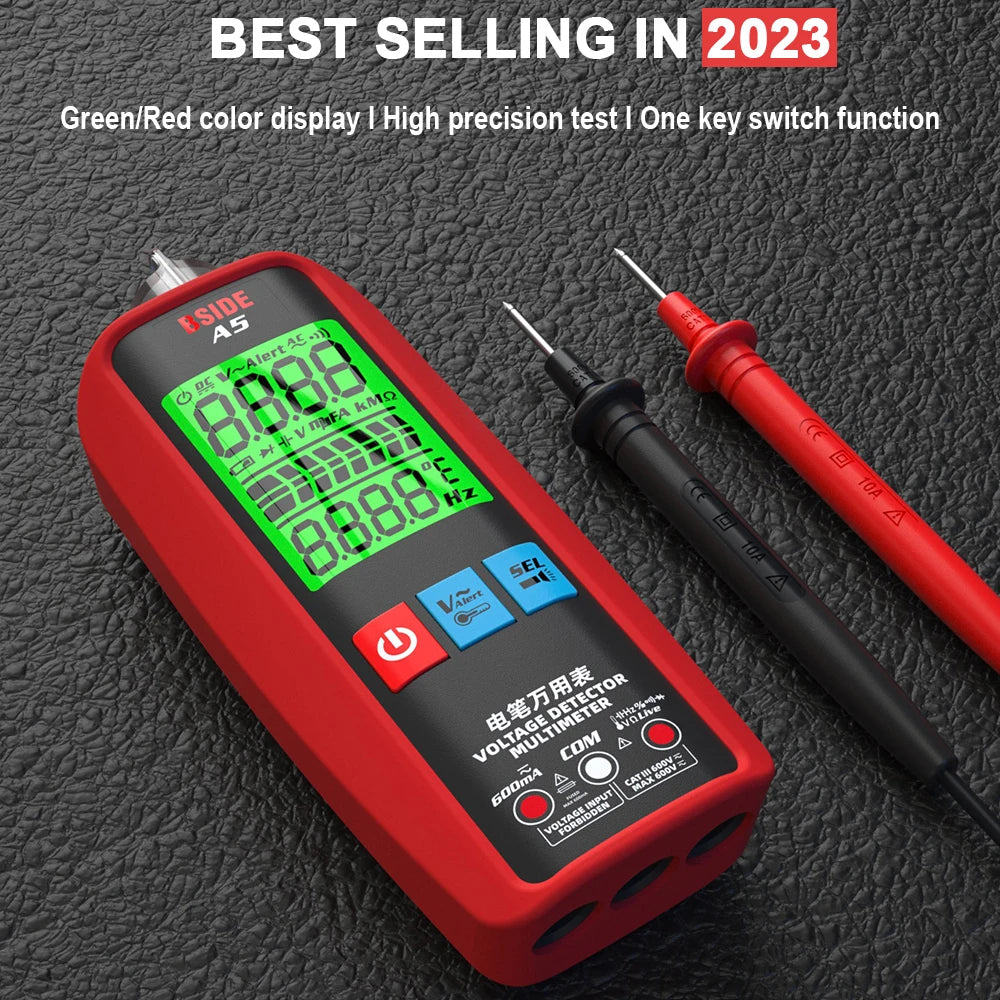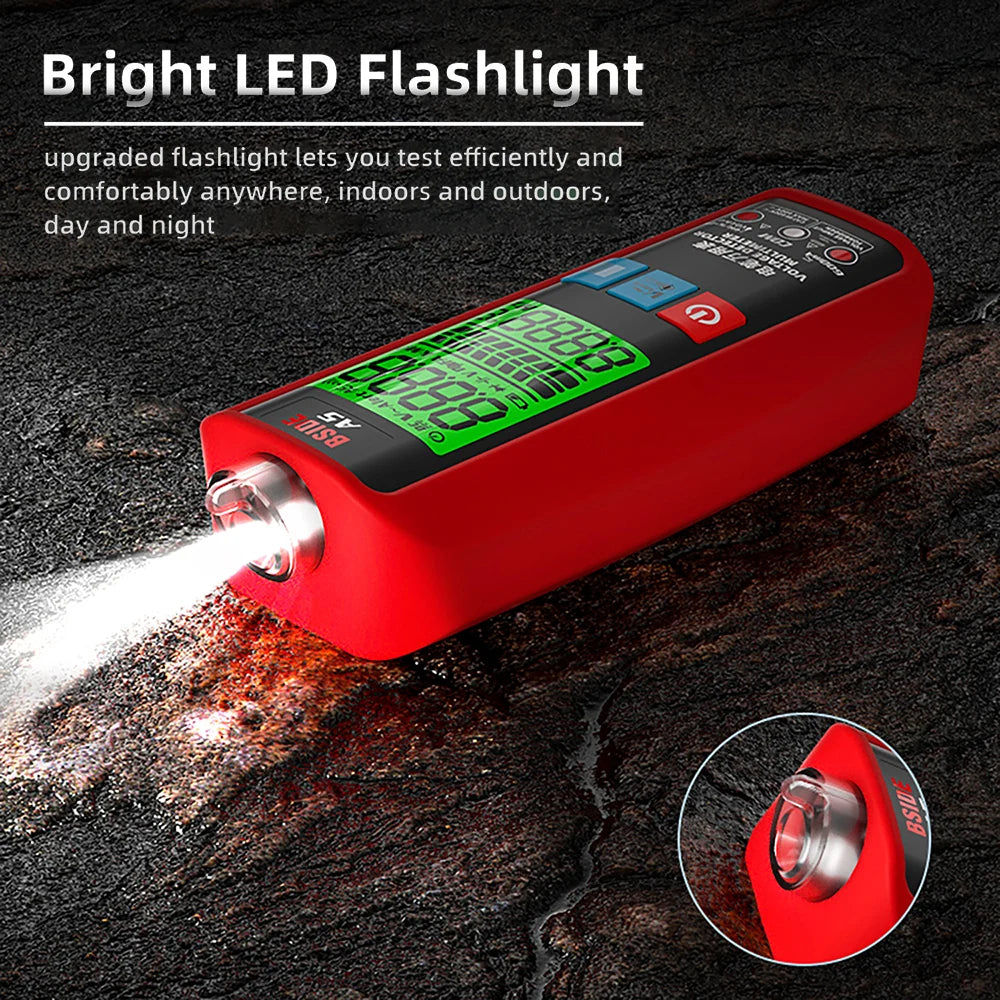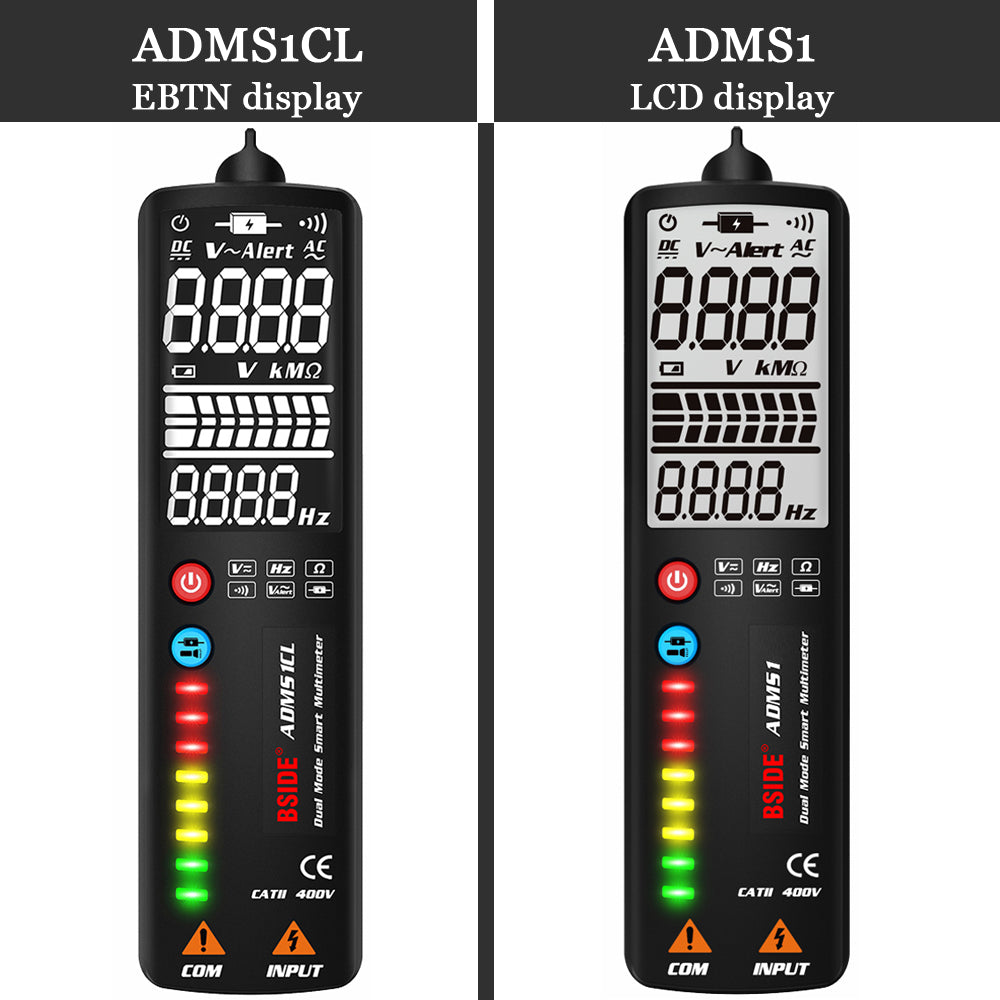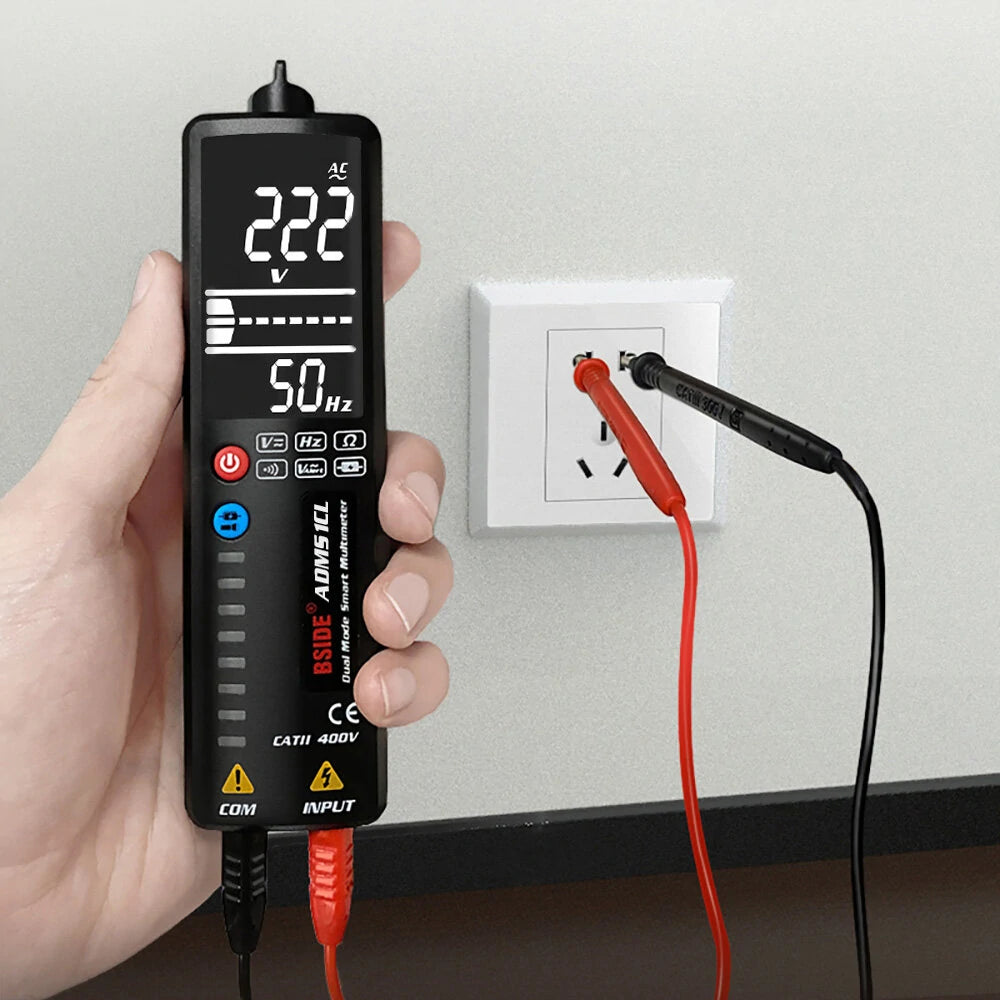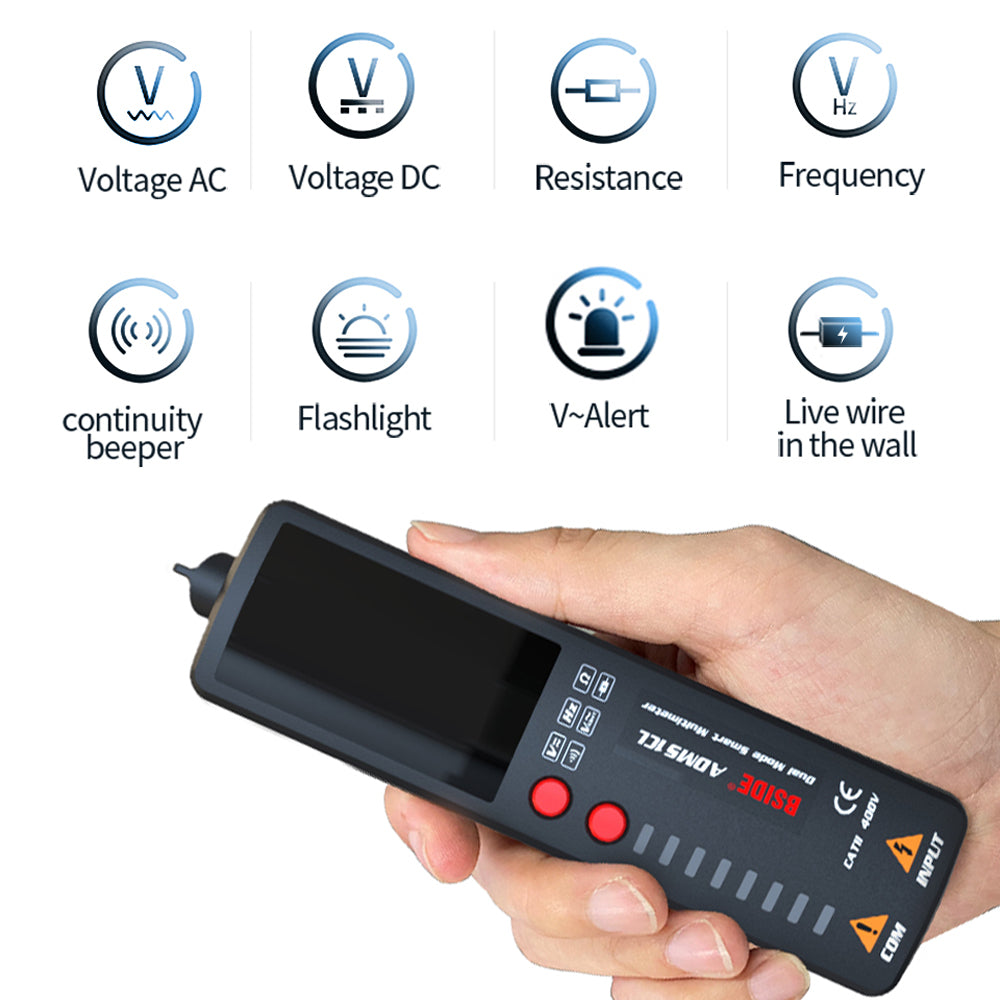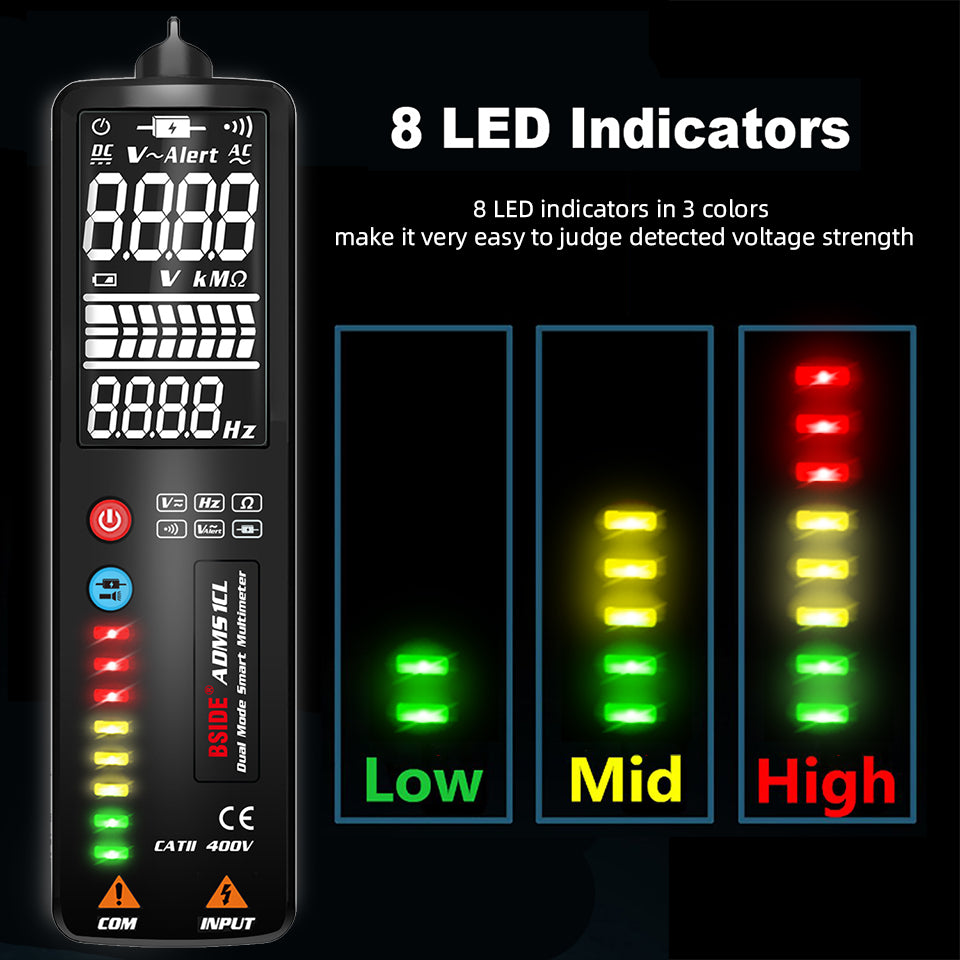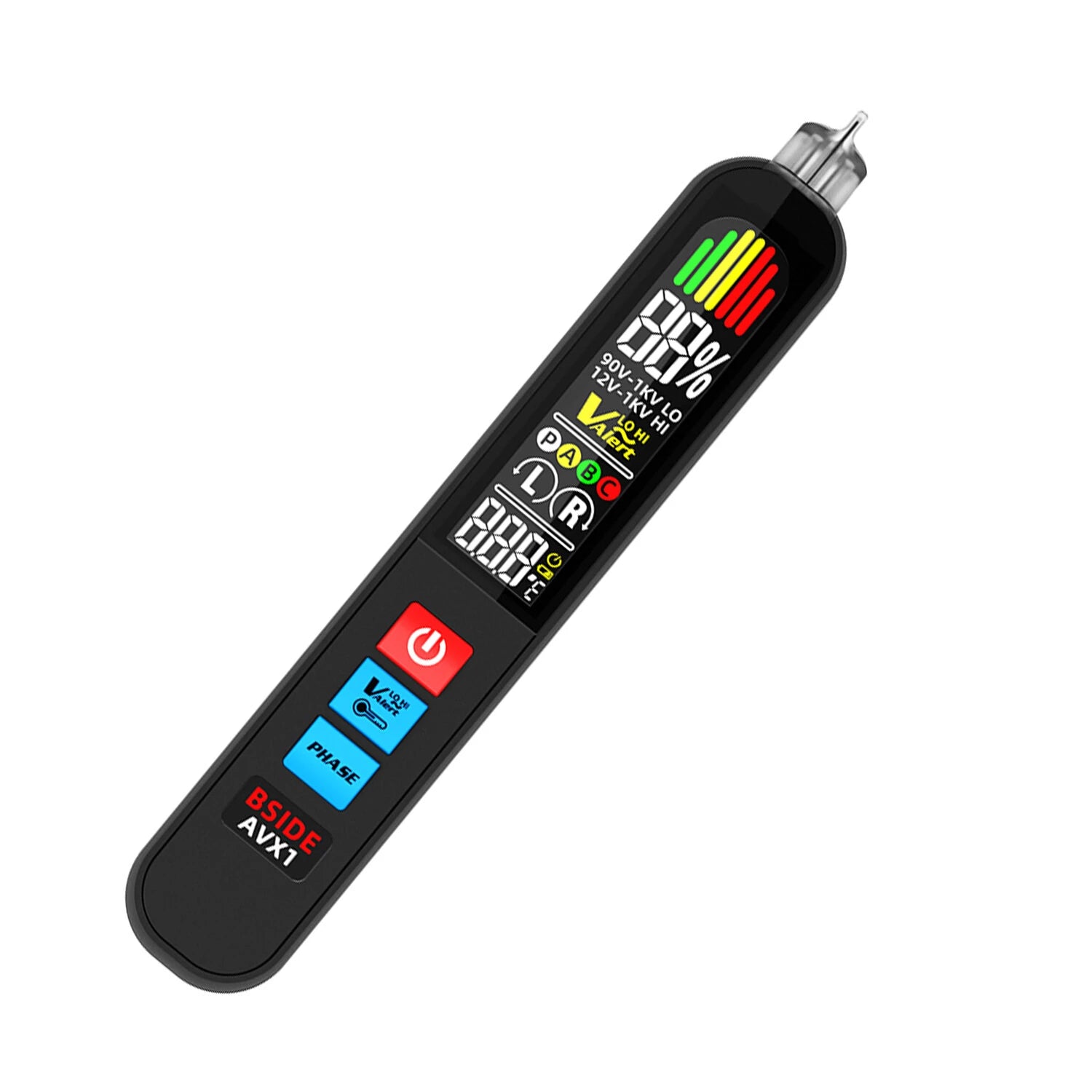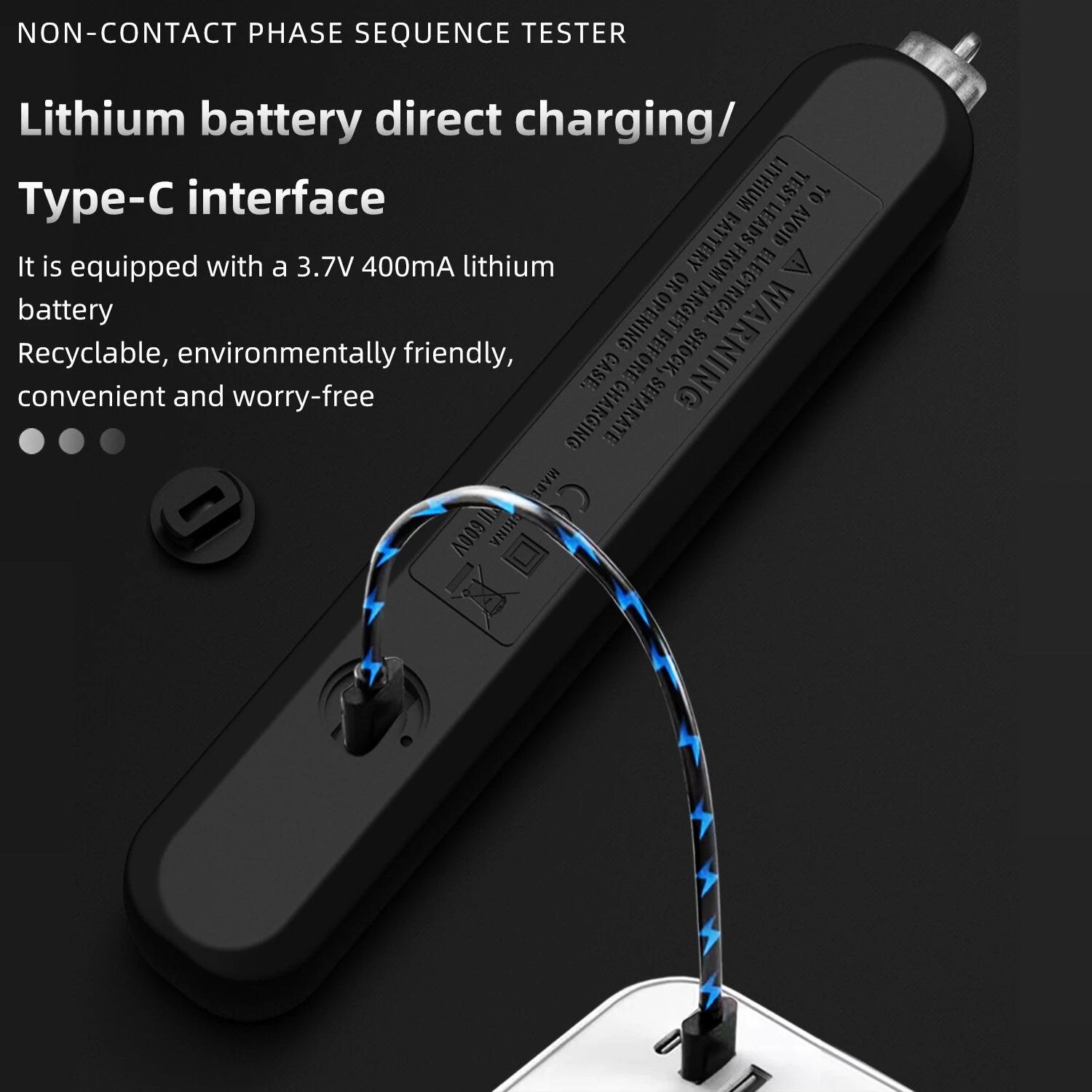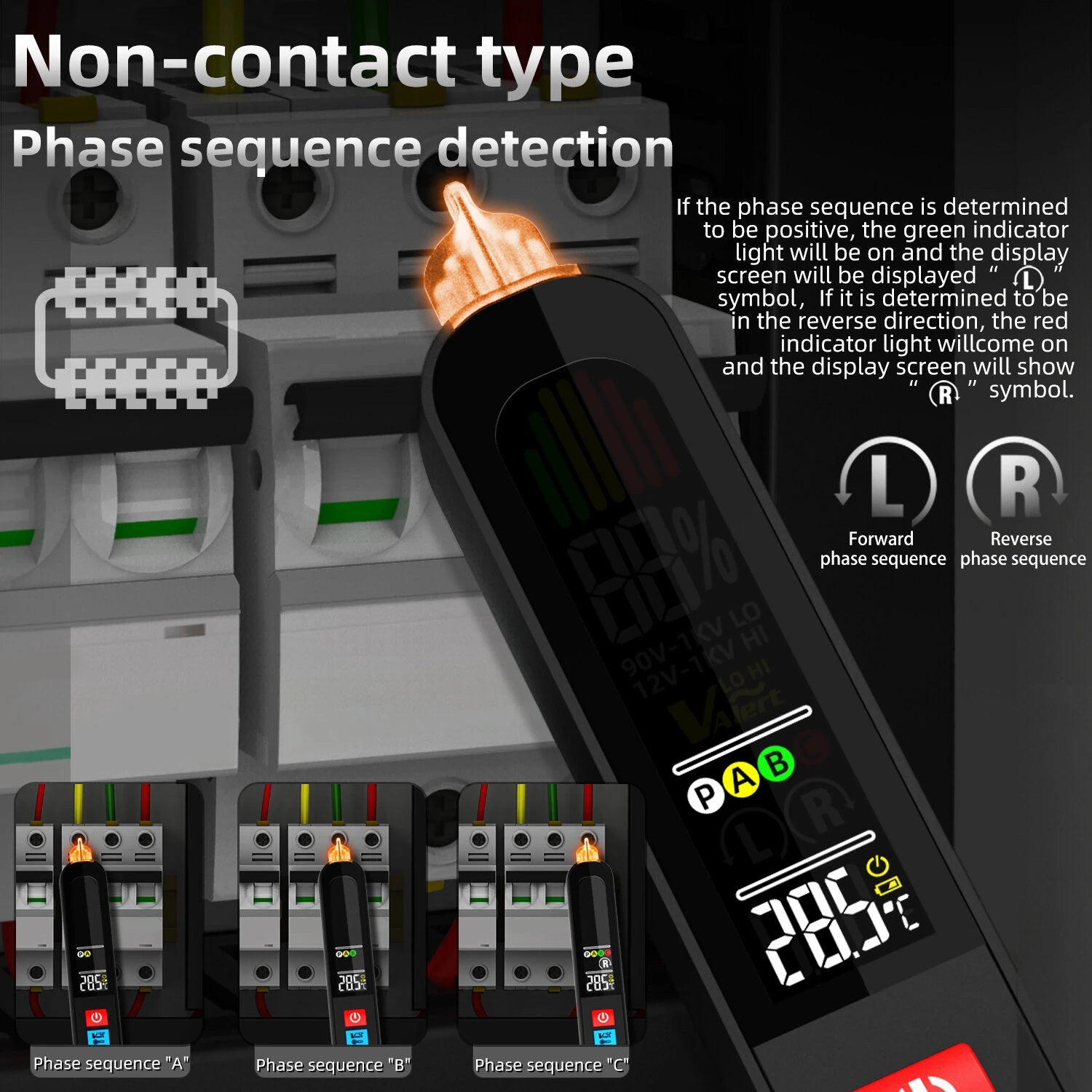A car battery is the heart of your vehicle’s electrical system, and a sudden failure can leave you stranded at the worst moment. Regularly testing your battery's health with a digital multimeter is an easy and reliable way to stay ahead of unexpected breakdowns. Whether you're a weekend DIYer or a seasoned technician, understanding how to test a car battery is a valuable skill. In this article, we’ll guide you through the steps using a standard BSIDE multimeter and explain what your readings really mean.
What You’ll Need
-
A digital multimeter (preferably with DC voltage range and auto-ranging features, like the BSIDE S11 or S30)
-
Safety gloves and glasses (optional but recommended)
-
Access to the battery terminals (open your vehicle’s hood)
Step-by-Step Guide
Step 1: Set the Multimeter to DC Voltage
Turn on your multimeter and set it to measure DC Voltage (V⎓). Most modern BSIDE multimeters will auto-range and detect the appropriate voltage level automatically. You’re aiming to read a range around 12 to 14 volts.
Step 2: Connect the Probes to the Battery
-
Place the red probe on the positive terminal (+) of the battery.
-
Place the black probe on the negative terminal (–).
Ensure a solid contact without touching the metal parts together.
Step 3: Read the Display
A healthy, fully charged car battery should read between 12.6 to 12.8 volts when the engine is off.
Voltage Reading Guide:
| Voltage Reading | Battery Condition |
|---|---|
| 12.6V – 12.8V | Fully Charged |
| 12.4V – 12.5V | 75% Charged |
| 12.2V – 12.3V | 50% Charged |
| 12.0V or below | Discharged / Weak |
Step 4: Test Under Load (Optional)
To simulate a load, turn on the headlights and AC for a couple of minutes before testing. If the voltage drops significantly (below 11.8V), your battery may not be holding a charge properly.
Step 5: Check Alternator Output (Engine Running)
With the engine running, your multimeter should read 13.7V to 14.7V. This indicates the alternator is charging the battery correctly. Anything below 13V might point to an alternator issue.
Why Use a BSIDE Multimeter?
BSIDE digital multimeters are compact, user-friendly, and built with safety features ideal for automotive testing. Models like the BSIDE ZT-S1, S30, and SH7 offer:
-
Auto-ranging for accurate readings
-
Large backlit display for visibility
-
Built-in safety indicators
-
True RMS and low input impedance (LoZ) for reliable voltage readings
Final Tips
-
Always test in a well-ventilated area.
-
Wear protective gear to avoid short circuits.
-
If readings are consistently low, consider replacing the battery or having a mechanic check your charging system.
Shop Automotive Testing Tools
Looking for a reliable multimeter to test your car battery? Visit BSIDEMeter.com to explore our range of automotive-friendly digital multimeters designed for accuracy and ease of use.

